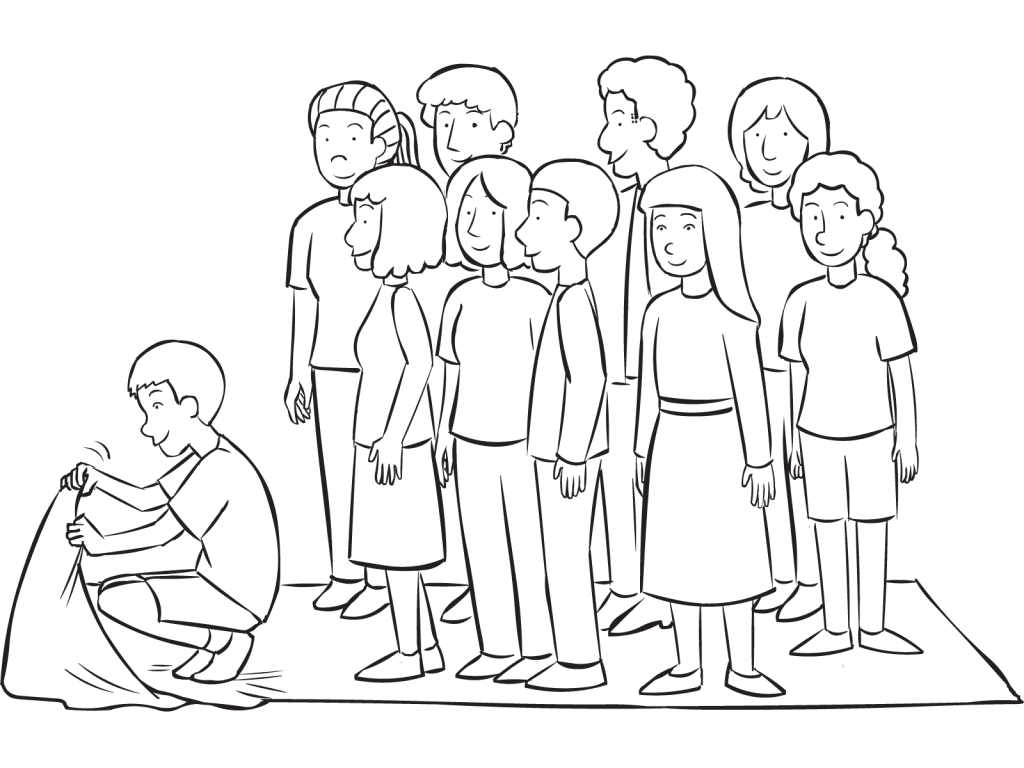Save to Playlist
Step-by-Step Instructions
Resources Premium
Video Tutorial Premium
How To Play Narrative Premium
Practical Leadership Tips Premium
Social-Emotional Learning Premium
Health & Wellness Programming Premium
Popular Variations Premium
You Might Also Like... Premium
Useful Framing Ideas Premium
Reflection Tips & Strategies Premium
Source Premium

No Props No Problem
Brand NEW book featuring 150+ outrageously fun group games & activities. Scan QR codes to connect to tons of digital content including video tutorials.
Add to Cart
NEW – No Props No Problem
The best-selling book featuring 150+ outrageously fun group games & activities. Scan QR codes to access exclusive digital content including video tutorials.

Free Ice-Breakers & Group Games
Ten of the best no-prop, interactive ‘get-to-know-you’ games & activities. 100% fun, your group will love ’em. Our most successful giveaway, 10,000+ downloads so far…
Top Ten Icebreakers & Group Games
Download our free 28-page ebook jam-packed with outrageously fun activity ideas.
Just one more question:
I am interested in…
Choose a plan that’s right for you
We offer a range of membership plans with no surprises.
Click an option below & discover our simple pricing.

Individual
Click here if you’re a:
- Teacher
- Corporate trainer
- Outdoor educator
- Camp leader
- Youth leader
- Conference organiser
- Therapist/counsellor
Membership Plans

Enterprise
Click here if you represent a:
- School
- Corporation
- Community-based Organisation
Explore plans for
10, 50, 200 or more
potential users
Membership Plans






This is a bit of a variation..
After getting everyone on board, i mention to them that they are on a magical island and that every single person is unique and is needed for the island to survive. At this stage ask the individuals of the group to name a profession. Eg. Ask grade 5’s what they would like to do when they grow up. Only condition is that there can only be one of that profession on the island.. The idea behind the question is to get them to value each other and keep helping for the islands survival. (Useful later in debrief).
Once everyone has said what they want to be, i reiterate the importance of each individual.
At this point i offer the groups the choice between two key words and they don’t know what it is about.. “Flip or Fold”. Once they have chosen, i describe what the task is.. Eg. If it is “Flip”. I mention that the magical island has a spell on it which causes the island to flip over every 24hrs and guess what it is now time for it to flip.. Essentially the activity runs as Mark described it in video. If they choose “Fold”, the island surface actually halves. (Variation). The task is to get the whole group to remain on the tarp while they attempt to fold it in half. Once done, they try it again and see how many times they can fold the tarp in half while remaining on top of the tarp.. hope this makes sense.. Essentially debrief will be very similar.. the presentation with options gives the group a sense of ownership as they kinda decided which direction to take the activity in..
These are a terrific array of ideas David, thanks for sharing. I especially like the diversity of professions on the island, and then the Flip or Fold choice.